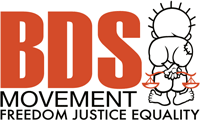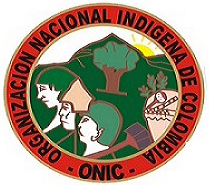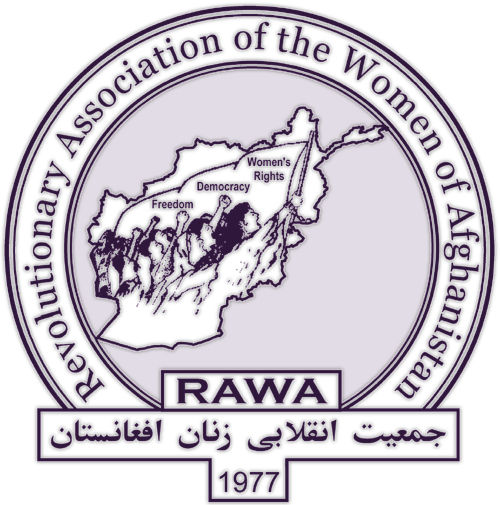Andean Theater
Peru: civil strike against mining project shuts down Cajamarca —again
Much of Peru's northern Andean region of Cajamarca was shut down in a 24-hour civil strike or paro April 11, the latest action in the campaign against the US-owned Conga gold-mining project. Organizers claimed participation in all 13 of Cajamarca's provinces. Public transport and most commercial activity came to a halt in Cajamarca city as protesters held a mass meeting in the Plaza de Armas, or central square. Hundreds of campesinos from the outlying provinces of Celendín and Bambamarca marched on the city, and students occupied the campus of the National University of Cajamarca. Campesinos in Jaén province, organized by a local ronda (peasant self-defense patrol), erected barricades of rocks and tree-trunks on the road through their territory, blocking traffic for hours. No violence was reported, despite a huge presence of National Police and army troops in the region, and threats from authorities in Lima. "What we aren’t going to allow are acts of violence that threaten the freedom of transit for other Peruvians who are not participating in the demonstration," cabinet chief Oscar Valdés told RPP radio network on the eve of the strike.
Peru's President Humala faces "dirty war" complaint before OAS rights commission
Reuters reports April 11 that it has been leaked documents revealing that a complaint has been filed at the Inter-American Commission on Human Rights (IACHR) over the 1992 disappearance of two campesinos at the village of Madre Mia in Peru's conflicted Upper Huallaga Valley—a case in which President Ollanta Humala was accused. The 21-page complaint mentions Humala nine times, and was filed confidentially in early 2010, bearing the signature of Ronald Gamarra, then head of Peru's National Coordinator of Human Rights. At the time of the incident, Humala was a solider leading counterinsurgency operations against Sendero Luminoso guerillas in the area of Madre Mia (near the border of San Martín and Huanuco regions). The IACHR complaint says Peru's judiciary improperly dismissed a suit against Humala over the incident in 2009.
Corporations own rights to 40% of Colombian land
Over the past 10 years, more than 40% of Colombia's national territory has been leased to, or is being solicited for leasing by, multinational corporations, according to a report released last year by the NGO PBI Colombia, "Mining in Colombia: at what cost?" (PDF). Of Colombia's total territory of 114 million hectares, more than 8.4 million have been licensed for mineral exploration and more than 37 million for oil exploration. Colombian business website Portafolio.com reported April 8 on a February report by the Colombian Geological Survey indicating that 18 multinational mining companies own the rights to over 1.5 million hectares—with the two largest, Anglo Gold Ashanti and Mineros SA, accounting for 59% of the total figure. Portafolio.com reported Jan. 15 that US multinational Cargill recently purchased 90,000 hectares in Meta department for grain production, and is seeking more. Foreign agribusiness interests from Argentina, Switzerland, Israel and other countries have procured some 100,000 hectares around Colombia for production of "biofuels" and other cash crops—particularly in the Magdalena Medio region.
Peru: trapped miners freed —and scapegoated
Nine informal miners were rescued April 11 after six days trapped in a tunnel at the Cabeza de Negro copper mine in Yauca del Rosario district, Ica province, Peru. President Ollanta Humala was on hand to greet them as they emerged—and in his public comments said the incident pointed to the dangers of informal mines. He said that informal mining companies that operate outside the law are "exploiting" workers, and that he will instruct the Public Ministry to toughen measures against them. The Cabeza de Negro mine was abandoned more than 20 years ago, but its entrance had never been dynamited as the law prescribes. In recent years, informal miners re-entered the tunnel, selling the copper on the gray market that is widely tolerated. Media reports emphasized that the miners were trapped by a cave-in triggered by an explosion they themselves had set. (AP, RPP, Andina, El Periodico.com, Spain, April 11)
FARC denies being weakened, rejects "terrorist" label
Colombia's FARC guerillas responded to reports that they have been weakened, and asserted that the rebels' "struggle for a socialist Colombia" is legitimized by the Universal Declaration of Human Rights. In a video recorded on March 24 and published on YouTube two days later, FARC commander Luciano Marín Arango AKA "Iván Márquez" said "there exists no end to the guerrilla as propagandized by the pawns of the trans-nationalization of the economy of Colombia. What does exist is an intense political and military confrontation and a growing mobilization of the social sectors." The guerrilla leader rejected the FARC's international label as terrorist organization, claiming that "the revolutionary violence, the rebellion against unjust and tyrannic regimes is an irrevocable universal right."
Peru: oil industry blamed in mass dolphin die-off
An estimated 3,000 dead dolphins have washed up on the coast of northern Peru so far this year—an average of 30 per day, and the mysterious die-off shows no sign of slowing. The mass wash-ups were first reported by the Association of Artisanal Fishers in Puerto Eten, Lambayeque. In the past days, over 480 carcasses have washed up in the Chaparrí Ecological Reserve. Carlos Yaipen of the Organization for Conservation of Aquatic Animals (ORCA) says he believes use of "marine bubble" technology in offshore oil exploration is responsible. "The oil companies use different frequencies of acoustic waves and the effects produced by these bubbles are not plainly visible, but they generate effects later in the animals," he told Peru21 newspaper. "That can cause death by acoustic impact, not only in dolphins, but also in marine seals and whales."
Peru: Cajamarca militarized on eve of regional strike
Troops have been mobilized to Peru's northern Andean region of Cajamarca ahead of an announced resumption of the civil strike there in opposition to the Conga gold mining project. Especially militarized are the outlying provinces of Celendín and Hualgayoc, where the project is slated, with some 1,000 National Police agents and 500 army troops having occupied strategic positions in the town centers. While the Cajamarca regional government is strongly backing the protest call, the provincial governments seem to be cooperating with the security forces. In Celendín, provincial authorities have made a sports arena available to the troops as a staging ground, according to Milton Sánchez of the local civil coalition, the Celendina Inter-institutional Platform. An unused jail in Hualgayoc's provincial capital Bambamarca has been similarly opened, according to Edy Benavides, leader of the Hualgayoc Defense Front. Both groups issued statements protesting the troop presence. Stressing the peaceful nature of the struggle, Benavides said, "We do not accept the militarization in our zone, because it has no justifiable reason."
FARC release captive members of security forces —hundreds of civilians remain in jungle
On April 2 the Revolutionary Armed Forces of Colombia (FARC) released the last members of the security forces they were holding captive—a group of 10, who have been held for more than 12 years. They were handed over in a joint operation orchestrated by the Colombian and Brazilian governments, the Red Cross, and activist group Colombians for Peace. The men were picked up in a Brazilian military helicopter, and taken from the jungle to the city of Villavicencio, Meta department, where they were reunited with relatives, appearing before TV cameras waving Colombian flags and punching the air. Afterwards they were flown to Bogotá, where President Juan Manuel Santos gave a speech welcoming their return.















Recent Updates
3 hours 18 min ago
3 hours 25 min ago
1 day 22 hours ago
1 day 23 hours ago
3 days 10 hours ago
3 days 11 hours ago
4 days 6 hours ago
5 days 1 hour ago
5 days 3 hours ago
5 days 4 hours ago